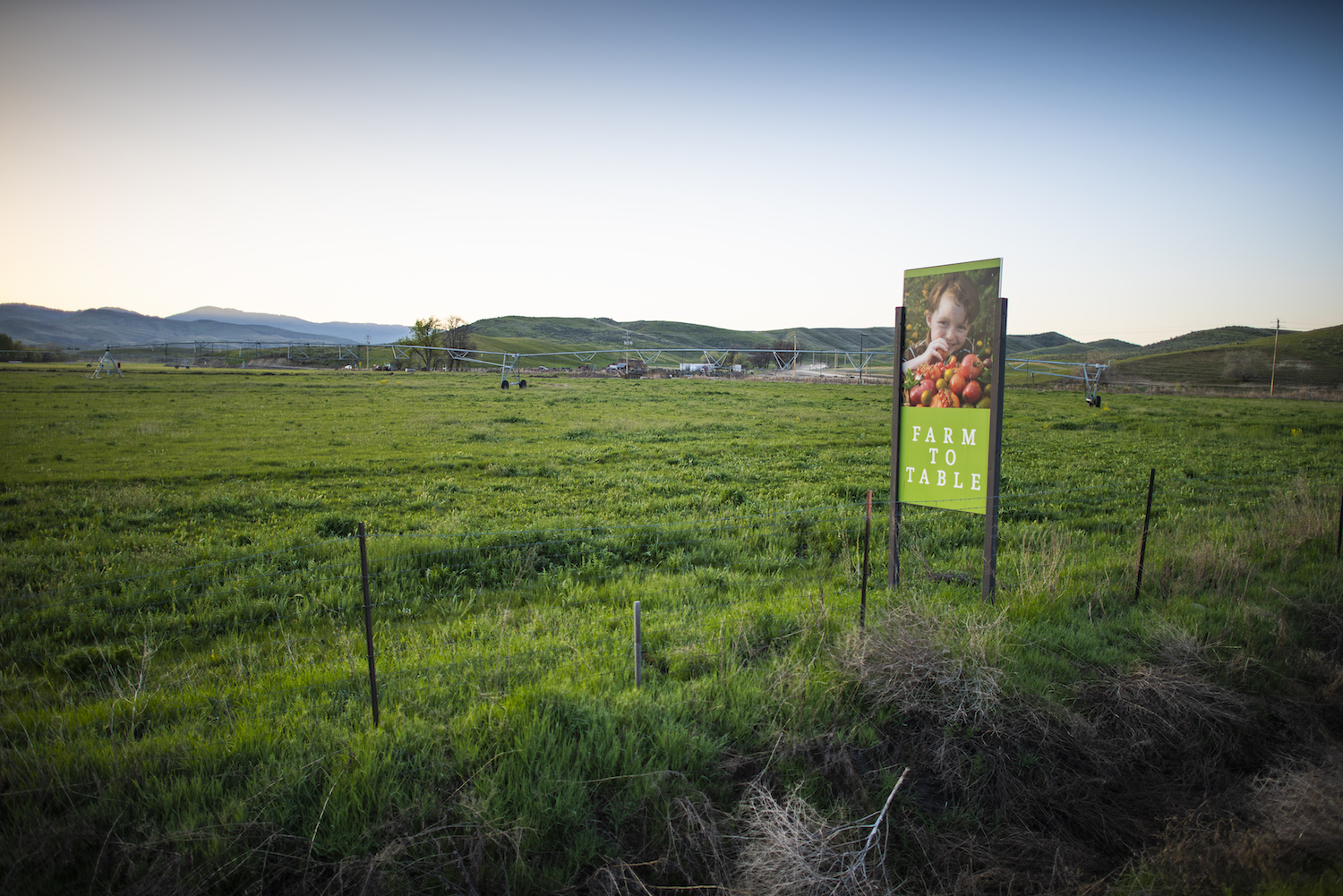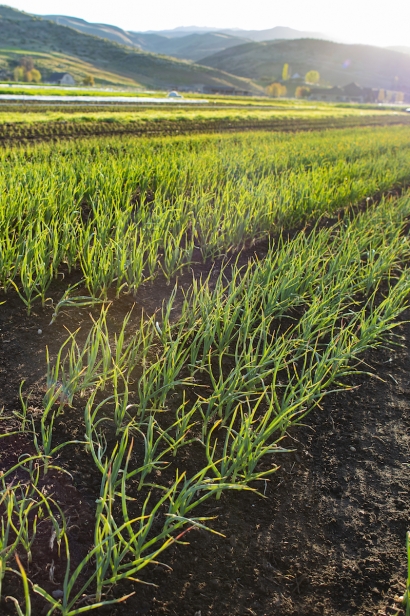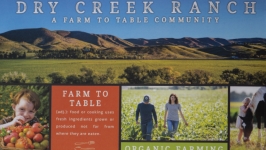Harnessing the Wind of Development
Standing on the edge of the duck pasture at Morning Owl Farm, looking out over the sunrise ablaze over Hammer Flat, I breathe in deep the sage that hitched a ride on the cool canyon breeze… and I feel the space. The kind of space the desert knows. Ahead of me is a 700-acre wildlife refuge—saved from what was once a planned community for 1,350 homes.
I remember the day I interviewed for an internship at the farm. I stood in this exact spot—love at first sight—and heard that the City of Boise would buy the land from a developer. Later, the city would sell its stake to Idaho Fish and Game, the agency that now keeps it wild.
To my right, nestled up against the border of pasture and the entire upper garden, is an open plat of 12 acres—private land that has been sold to a developer who is now looking to pack 45 houses onto the space. There’s a slurry of emotions that comes with any prospective development so close to one’s location and heart, and so altering of the landscape and culture. How I feel about it morphs by the minute with the changing hues of the sunrise, but I know the direction the wind blows. The path towards growth that reflects a healthier vision of the future for our land, for our communities and for ourselves will come from harnessing that power rather than fighting headlong against it.
There is an aura of inevitability surrounding any conversation about development these days. We all know it’s going to happen and, at some level, it likely will be opposed by nearby residents and other stakeholders. As the rural edges of the Treasure Valley continue to fill in, there’s pushback from citizens who are frustrated, don’t feel their voices are being heard and feel powerless against the political and economic structures that dominate the landscape. These citizens aren’t seeing any significant alternatives to the suburban sprawl of the last half century, and they’re thirsty for smarter growth that not only honors our land, history and culture, but also enacts a creative, healthy vision for communities of the future.
Developers are the ones enacting this growth and they stand to benefit the most, while politicians and bureaucrats often appear to be on the side of these monied interests. That’s not to say every plan a developer puts forth will be approved on a fast track; often developers see themselves as the victim of angry stakeholders and overreaching regulations. Their path is difficult to navigate as well.
It’s easy to carve a divide in such a system—to create a false and unnecessary dichotomy that pits two camps diametrically opposed. It’s important to acknowledge aspects of the divide, but what we can’t do is stop at the precipice of that chasm, shouting forever across the abyss into the wind. When nuance becomes a dirty word and both sides see themselves as eternal victims we need a reset.
We must leverage our voice as citizens and consumers to imagine change and demand a better vision. We do this through listening in the marketplace of free ideas and having conversations about how to build communities that enrich our lives and honor the land.
I had one such conversation early this spring. With the goal of keeping Boise Hunter Homes honest to their advertisements and opinion-piece claims regarding a farm-to-table aspect to their proposed Dry Creek community, I publicly inquired about how many acres they were setting aside for a farm and how much they were going to pay the farmer. This rather cheeky comment earned me a phone call and a sitdown with the owners, Travis and Jim Hunter. We talked for an hour and a half about what such a farm-to-table community might look like and how it could get off the ground. What would it take to fold a significant agriculture presence into the plans for the community? They seemed as interested in this question as I was.
Whether this conversation came due to talk of a possible referendum and public outcry against the development, or from a legitimate desire to build a healthy and functioning farm-to-table community, is still an unknown. Keeping the pressure up and holding developers accountable by demanding amenities like this is how we unlock the creative potential that comes from conversation and partnership.
I hope these developers continue to pursue these ideas for their project in a substantial way. I also hope those who oppose this development continue to oppose it. But I can’t help but wonder if both parties could come out ahead if there was legitimate dialogue and, more importantly, listening.
In Fort Collins, Colorado, Gino Campana is a developer who appears to be innovating and listening. His company, Bellisimo Inc., created Bucking Horse, a “healthy living community” that is attempting to preserve the agriculture heritage of the land by having a 3.6-acre CSA farm within the 1,000-home subdivision. He said this vision was not derived as a response to criticism or pushback against disappearing farmland. This came from Campana’s own ideal of a healthy community that honors the land and culture upon which it’s built. So the farm and other amenities were woven into the project from the beginning.
Despite the initial challenges in planning, zoning, getting the farm off the ground, how the farmer would be compensated and how to address questions about growing methods and aesthetics, they’ve now had a few seasons under their belt. For Campana, these decisions are already reaping benefits: They’ve estimated about $70 more per square foot for houses in the Bucking Horse community compared to comparable houses in nearby subdivisions without these amenities.
Campana added there’s no real model to go off of when it comes to how to run a farm as an amenity. There are a number of planned communities around the country that are experimenting with various levels of integrated agricultural projects, but this is new territory.
Flagship communities like Bucking Horse are just the beginning. According to a 2016 study by the Urban Land Institute, “Real estate decision makers—developers, owners, property managers, designers, investors and public officials—are increasingly collaborating with an array of partners to leverage growing consumer interest in food. Partnerships with chefs, farmers, universities, private foundations, nonprofit organizations and public health officials are supporting the creation of food-centric development projects that lead to multiple wins, including improved health outcomes, reduced pollution and enhanced financial advantages for developers.”
The wind howls up here on Hammer Flat. It’s destructive at times, it throws row cover off the crops and into the trees and has twice torn the plastic off the 700-square-foot high tunnel we use for season extension. The wind is not something individuals or even an organized group of concerned citizens has the power to stop. But I can reposition and relocate the high tunnel. Even a sailboat can sail into the wind. You can’t do this head-on, you must harness the wind 22° from the direction it’s coming from. It’s not direct, you zig-zag, but that’s how you make headway. So if market forces find us moving in the opposite direction of healthy land, communities and individuals, let’s use those same market forces to propel us towards those goals. Sure it’s 22° from where we want to go, but we’re making headway. This is how we foster the creative potential within ourselves to build healthy communities of quality and character necessary for a better future.
Morning Owl Farm | @morningowlfarm
Idaho Fish and Game | @idahofishandgame
Boise Hunter Homes | @boise_hunter_homes
Dry Creek Ranch
Bellisimo Inc
Bucking Horse











